Die Säulen der Erde
page 2
| x |
|
|
|
|
|
|
|
|
|
|
|
|
|
|
|
|
|
|
|
|
|
|
|
|
|
|
|
|
|
|
|
|
|
|
|
|
|
|
|
|
|
|
|
|
|
|
|
|
|
|
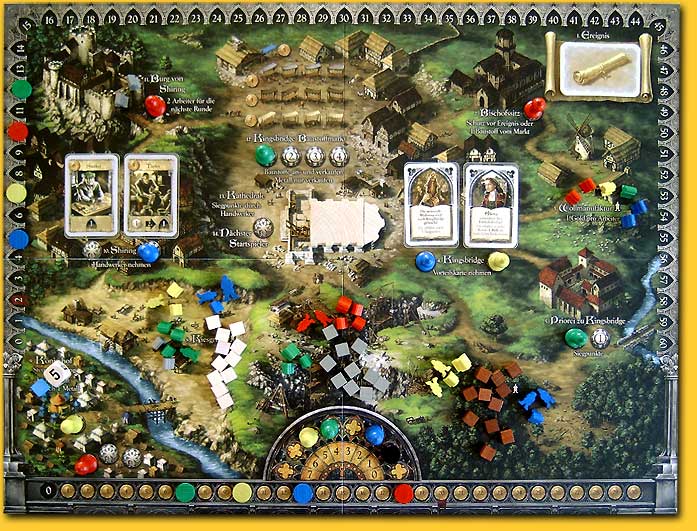 |
| x |
|
|
|
|
|
|
|
|
|
|
|
|
|
|
|
|
|
|
|
|
|
|
|
|
|
|
|
|
|
|
|
|
|
|
|
|
|
|
|
|
|
|
|
|
|
|
|
|
|
|
|
9. Each round, the players have to pay two to five gold taxes. This is determined by a die. Everybody that placed a builder at the King’s court gets tax exemption and doesn’t have to pay. Furthermore, the first player to place his builder at the King’s court receives one metal, a very valuable resource that can only be collected in the King’s court or through some event- and advantage cards.
10. Each round two craftsmen cards are placed on the board in the Shiring. As opposed to the craftsmen cards that can be bought in phase 1, you do not have to pay for the craftsmen obtained from the Shiring.
11. The player that placed his builder in the castle can take two of the neutral, grey workers. In the next round, he can use these two additional workers to obtain resources as if they were his own.
12. On the market, players can sell or purchase resource cubes.
13. Building the cathedral. This is the most important part of the game: the resource cubes obtained in phase 1 and 2 can be converted into victory points by the craftsmen.
|
|
 |
| x |
|
|
|
|
|
|
|
|
|
|
|
|
|
|
|
|
|
|
|
|
|
|
|
|
|
|
|
|
|
|
|
|
|
|
|
|
|
|
|
|
|
|
|
|
|
|
|
|
|
|
|
|
|
The craftsmen cards indicate which materials they can convert into how many victory points, and how often they can repeat this in one round. A sculptor, for example, can convert two stone into one victory point, four times per round. This means that the owner can exchange eight stone cubes for 8:2=4 victory points. At the end of the round, a maximum of five resource cubes can be taken into the next round. Additionally, a piece of the wooden cathedral is placed on the board.
14. The player that placed his builder next to the cathedral is the next starting player. If there is no builder on this location, the next player in clockwise direction becomes starting player.
|
|
| x |
|
|
|
|
|
|
|
|
|
|
|
|
|
|
|
|
|
|
|
|
|
|
|
|
|
|
|
|
|
|
|
|
|
|
|
|
|
|
|
|
|
|
|
|
|
|
|
|
|
|
At the end of the round, all builders are put back in the bag, and the workers are returned to their owners. After six rounds, the final part of the wooden cathedral is built. This indicates the end of the game; the player with the most victory points made the largest contribution to the cathedral, and thus wins the game!
|
|
 |
|
|
|
|
|
|
|
|
|
|
|
|
|
|
|
|
|
|
|
|
|
|
|
|
|
|
|
|
|
|
|
|
|
|
|
|
|
|
|
|
|
|
|
|
|
|
| First of all it has to be said that 'Die Saülen der Erde' really looks fantastic. The beautifully illustrated board, by Michael Menzel, features the cathedral as centerpiece, surrounded by the other locations that play an important role in the game such as the castle, the priory, the forest, quarry, gravel pit and wool mill. The wooden cathedral, that functions as a fancy round marker (when the six pieces have been build, the game is over), is also a very nice touch. Also pay attention to the wonderful stained glass on the cost list, and the nice wooden builders and workers. The illustrations on the board already make it clear what can be done on which location, which makes the game easy to learn. |
|
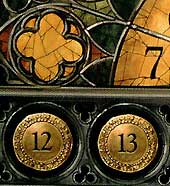 |
| x |
|
|
|
|
|
|
|
|
|
|
|
|
|
|
|
|
|
|
|
|
|
|
|
|
|
|
|
|
|
|
|
|
|
|
|
|
|
|
|
|
|
|
|
|
|
|
|
|
|
|
|
|
|
The craftsmen are numbered: in each round four new craftsmen are brought into the game. This introduces a certain development into the game: the ‘early’ craftsmen score much less victory points than the ones that enter the game in the later rounds. When you’ve played the game a couple of times you know which craftsmen are still to come. This makes the element of luck smaller, and increases the role of the tactical considerations: should you buy the first sculptor that enters the game, or is it better to wait a couple of rounds for a much ‘better’ sculptor? The limit of five craftsmen may become a problem, so it is vital to make choices! |
| x |
|
|
|
|
|
|
|
|
|
|
|
|
|
|
|
|
|
|
|
|
|
|
|
|
|
|
|
|
|
|
|
|
|
|
|
|
|
|
|
|
|
|
|
|
|
|
|
|
|
|
| The idea is clear: collect as many victory points as possible with your craftsmen. But there are many possible routes to victory! Stone is a resource that takes a lot of workers to collect, more than wood or sand, but with the right craftsmen you can also earn more points with stone than with the other resources. But then you have to be able to get these right craftsmen! Metal is the most difficult resource to obtain, but in the last rounds some craftsmen are introduced into the game that can convert metal into an enormous amount of victory points. Trying to collect as much metal as possible is thus one tactic that could lead to victory. But with the right craftsmen, you can also get very far by converting each round large numbers of sand, which does not take so many workers to obtain. |
|
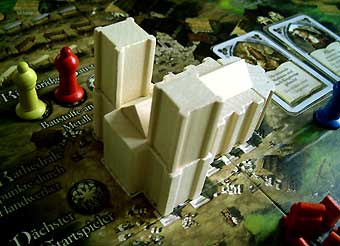 |
‘Die Saülen der Erde’ is a not very complex game that brings the occasional player lots of pleasure. Despite the 14 locations on the board where all kind of things happen, the game is transparent and easy to learn. The beautiful artwork and game design also make it a visually very attractive game. In addition, because of the tactical considerations it is a challenging game for more regular players: each game leads to new inspiration and thoughts on the winning strategy. This game has all elements to be liked by a broad audience!
© 2006 Barbara van Vugt
Die Säulen der Erde, Michael Rieneck & Stefan Stadler, Kosmos, 2006 - 2 to 4 players, 12 years and up, 90-120 minutes
|
|
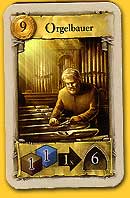 |
|
|
|
|
|
|
|
|
|
|
  |
|
|
|
|
|
|
|
|
|
|
|
|
|
|
|
|
|
|
|
|
|
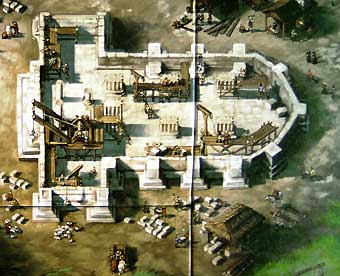 |
  |
|
|
|
|
|
|
|
|
|
|
|
|
|
|
|
|
|
|
|
|
|
  |
|
|
|
|
|
|
|
|
|
|
|
|
|
|
|
|
|
|
|
|
|
  |
|
|
|
|
|
|
|
|
|
|
|
|
|
|
|
|
|
|
|
|
|
  |
|
|
|
|
|
|
|
|
|
|
|
|
|
|
|
|
|
|
|
|
|
  |
|
|
|
|
|
|
|
|
|
|
|
|
|
|
|
|
|
|
|
|
|
  |
|
|
|
|
|
|
|
|
|
|
|
|
|
|
|
|
|
|
|
|
|
| x |
|
|
|
|
|
|
|
|
|
|
|
|
|
|
|
|
|
|
|
|
|
|
|
|
|
| x |
|
|
|
|
|
|
|
|
|
|
|
|
|
|
|
|
|
|
|
|
|
|
|
|
|
 |
|
|
|
|
|
|
|
|
|
|
|
|
|
|
|
|
|
|
|
|
|
 |
|
|
|
|
|
|
|
|
|
|
|
|
|
|
|
|
|
|
|
|
|
 |
|
|
|
|
|
|
|
|
|
|
|
|
|
|
|
|
|
|
|
|
|
| x |
|
|
|
|
|
|
|
|
|
|
|
|
|
|
|
|
|
|
|
|
|
|
|
|
|
 |
|
|
|
|
|
|
|
|
|
|
|
|
|
 |
|
|
|
|
|
|
|
|
|
|
|
|
|
|
|